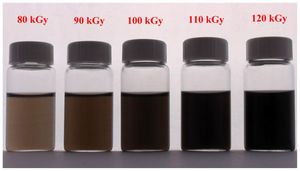Understanding the health challenges faced by individuals living with HIV (PLWH) is increasingly important as advancements in treatment have shifted perspectives on the disease. A recent study carried out at MacKay Memorial Hospital in Taipei, Taiwan, has illuminated the prevalence and associated factors of metabolic syndrome among this group, offering valuable insights as more individuals live longer with HIV.
Set against the backdrop of changing therapeutic approaches, the research revealed an encouragingly low prevalence of metabolic syndrome, at 10.0%. This finding contrasts with earlier assessments which frequently reported rates ranging from 19% to as high as 40% globally. The study suggests this decline may be linked to the widespread adoption of integrase inhibitors within the highly active antiretroviral therapy (HAART) regimen. Notably, 81.3% of the 809 participants enrolled were on integrase inhibitor-based therapies.
Age emerged as the predominant risk factor for developing metabolic syndrome, highlighting its significance as individuals living with HIV age. The study's authors noted, "Age remains a strong risk factor for the development of metabolic syndrome among PLWH," indicating the potential need for increased vigilance as the population ages.
Metabolic syndrome is characterized by the clustering of conditions such as obesity, hypertension, diabetes, and dyslipidemia. Previous research has typically linked HIV infection with metabolic issues, and this study aligns with those findings by reinforcing age as a significant contributor. Following the study process, it was determined no strong correlations existed between traditional HIV-related factors—such as CD4 counts and viral load—and metabolic syndrome prevalence. This refocusing of risk factors signifies the need for preventative healthcare strategies aimed at traditional risk contributors among the aging HIV population.
The findings were grounded on data collected from September 2022 to January 2023. Researchers employed the modified National Cholesterol Education Program ATP III criteria to investigate metabolic syndrome, using body mass index (BMI) as a surrogate for waist circumference due to practical limitations.
Drilling down on the numbers, the report delineates characteristics between those with and without metabolic syndrome. While the prevalence of hypertension and diabetes was higher within the metabolic syndrome group, biochemical markers again suggested no substantial difference attributable to previous HIV therapy variations. The authors contend, "The prevalence rate of metabolic syndrome appeared to have declined among PLWH compared to previous reports, possibly secondary to widespread use of integrase inhibitors." This demonstrates the potential for integrase inhibitors to contribute positively to the metabolic profiles of PLWH.
This study serves not merely as research but as notification of significant shifts within HIV treatment paradigms, potentially informing clinical approaches. The global population of individuals living with HIV reportedly totals 39 million, with more individuals living longer than ever before thanks to the advancements made since the early days of HAART.
One of the core challenges moving forward will be addressing the dual burden of managing HIV infection alongside the traditional risk factors for metabolic syndrome related to aging. Understanding how treatment choices can mitigate risk will empower both clinicians and patients alike.
The research reaffirms the importance of healthcare monitoring among those living with HIV, particularly as they navigate these changes over time. With increased life expectancy, the focus must pivot to not only treating HIV but also managing co-morbidities arising from metabolic syndrome components.
Concluding the study, the authors highlight areas for improvement and continued research, noting, "The insights from our research can guide both clinicians and patients to focus on managing traditional risk factors, including hypertension, diabetes mellitus, dyslipidemia, and obesity, to prevent metabolic syndrome and its associated complications." Together, these insights pave the way for more comprehensive care strategies aimed at fostering healthier futures for the HIV population.



